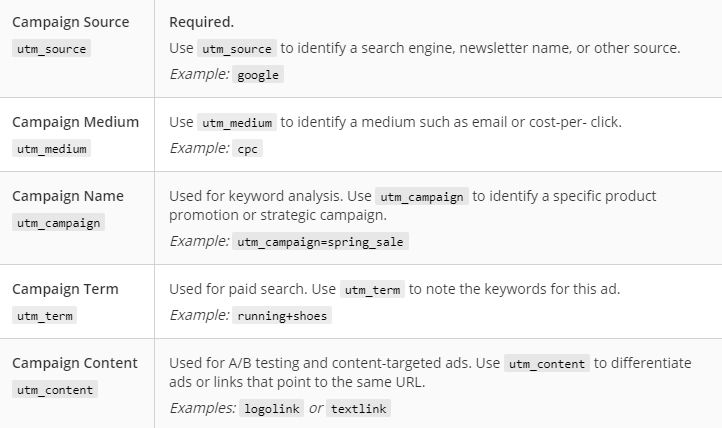Google UTM Code: Measuring Link Clicks & Best Practices with Google Analytics
Have you ever sent out an email newsletter and wondered how many people came to your site from it? Maybe you had set up a paid social campaign on Facebook because your audience and primary demographic resided there, and also because you wanted to reinforce your PR messaging to that audience.
Some of you might’ve added Google’s UTM tags (aka UTM parameters or UTM codes) to your links. If not, while data analysis might be possible still using basic reporting in Google Analytics, it could be done in a much cleaner and more efficient way using UTM tags. Not to mention that the ability to really drill down into reports can prove to be hugely beneficial.
In this post, I want to explain what Google UTM codes do and some best practices for data cleanliness and continuity.
What is UTM Code?
In the most simple definition, UTM tags are extra text characters that users tack on to the end of a hyperlink before it’s placed on another website. When a user clicks on that link, data is sent back to the Google Analytics servers where it then appears in your Analytics reports. Usually these are added on various link placements and also in various digital ads.
For Example, if I were to place my homepage url (www.davidgengler.com) in a Facebook ad that is part of a larger branding campaign, the complete UTM-tagged URL might look something like this:
www.davidgengler.com/?utm_source=facebook&utm_medium=cpc&utm_campaign=2019-branding
There are 5 UTM fields that you can use on a link with only 1 of them (Campaign Source) being required. Of course, the better structured your links are, the easier it is to dig deep into your reports and really split things up well.
These UTM fields include:

Of these, it’s only the Source tag that’s required when adding UTM tags. Again though, the more you can add, the better – as long as the tags help segment things. For probably 90% of the campaigns I’m running, I’m always using Source, Medium, and Name. For campaigns where I’m heavy on the A/B testing of different ad copy or image creatives, I’ll use content as well.
A super helpful tool to use when building out these URL’s is Google’s own Campaign URL Builder.
UTM Tagging Best Practices
If you create a link tagging structure today and stay consistent with it, you’ll save yourself a headache and a lot of confusion tomorrow. As data continues to come in, a disheveled Analytics integration could just snowball into something worse. With client websites, this is a common thing I get in order as part of my first priority items. Here are a few things to remember.
First, use dashes instead of underscores in URLs. Similarly, use dashes instead of percentage signs (the representation for spaces in Google Analytics). Google does not penalize dashes in its algorithm. If you want to take a bit of a deep dive into the topic, Google’s ex-head of webspam and former software engineer Matt Cutts details his thoughts here.
Second, and this is one I see all too often, is stay consistent with lowercase usage. For example,
utm_source=Facebook is different than utm_source=facebook
They’re both providing traffic from Facebook, but Analytics will interpret them as two separate entities and will show two different rows for Facebook in your reports.
With Analytics defaulting its naming conventions to lowercase, by doing the same, you’ll prevent data redundancies.
Finally, in the third spot, track your UTM links inside a spreadsheet. Keeping record of previous naming conventions will help with data continuity when you send out a similar email newsletter or develop a similar campaign in the future. It doesn’t take long for the list of campaigns, site placements, and various social links to grow to a point where it’s difficult to accurately manage, let alone measure in Analytics. Keeping things tidy from the get-go will help not only your colleagues, but also help prevent future headaches for yourself when it’s time to report on something. If you’re interested, Sam Wiltshire developed a great Google Doc version that might be helpful with tag management.
And that’s about it! Using properly tagged UTM links will provide you with better insights into how your site or campaign is performing and will also show areas of opportunity. If you have any questions or are looking for some help on the analytics and advertising front, please reach out to me via the contact form on my homepage.
Thanks for reading!
David Gengler